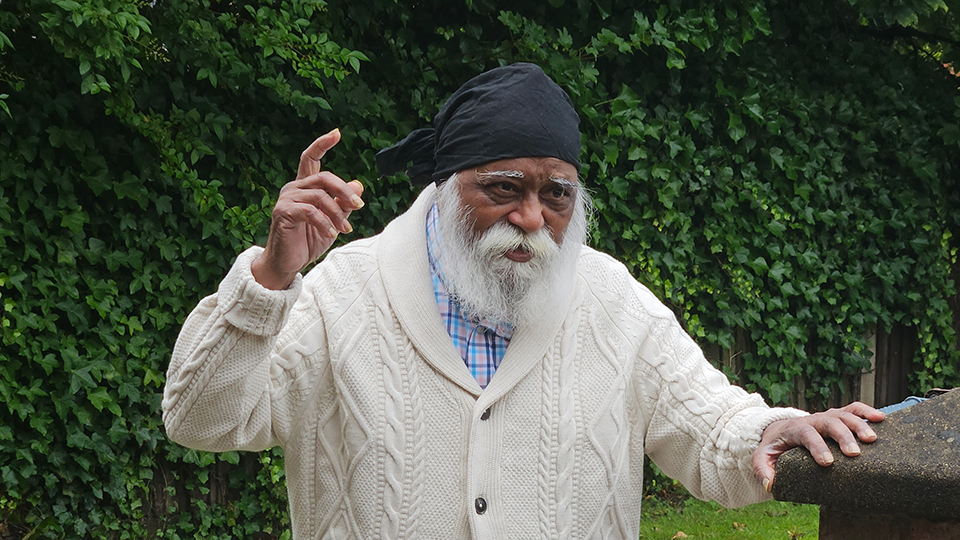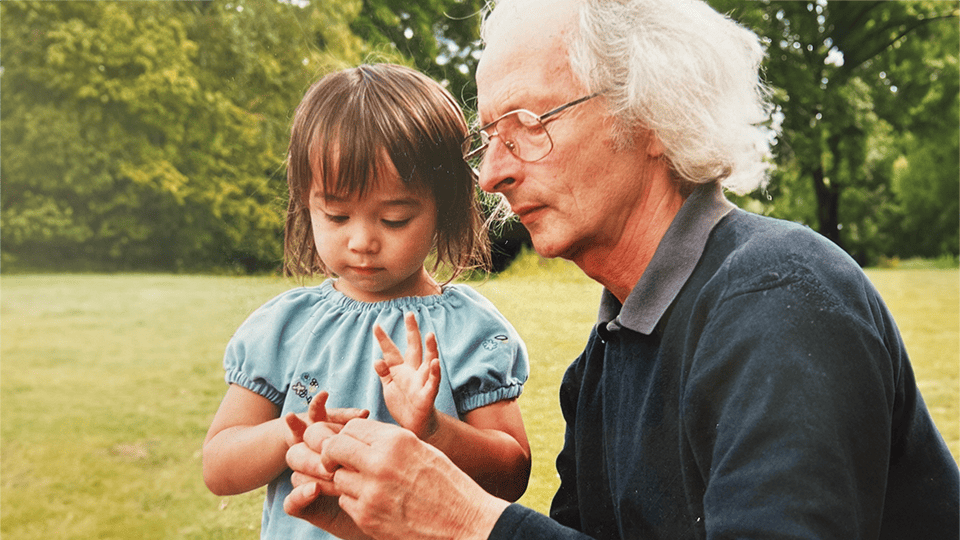
Mohinder’s story – Reducing stigma in the Sikh community
Kaur talks about caring for her dad, Mohinder, since his mixed dementia diagnosis, and how community awareness needs to be improved.
To help a person with dementia maintain their independence and quality of life, it’s important to make their home as safe and comfortable as possible. This needn’t be expensive or disruptive – small changes often make a big difference.
A good way to identify any changes that might benefit the person you care for is to take a tour around their home, looking for potential problems and ways to make improvements. If possible, involve the person in any changes you make.
To help the person with dementia recognise their home, avoid making noticeable changes outside, such as to the colour of the door. Try to look after any trees or plants so the outside area looks consistent. A large door number is also helpful.
If the person is prone to falls, install handrails next to steps, or consider converting steps into a ramp. Ensure there is adequate lighting in case they are coming or going in the dark – a motion sensor light means they will not have to remember to turn it on or off.
A doorbell with a video camera is a useful safety measure to monitor who is coming to and leaving the property.
You could also fit a key safe with a combination code so family members, carers or the emergency services can let themselves in if the person with dementia cannot open the door.
Inside, keep the hallway uncluttered so it’s easy to get in and out. Keep keys in a set place, such as a drawer in a hall table – make sure they’re not visible from the outside through a window or glass panel, as this may attract intruders.
The kitchen can be a hazardous place for people with dementia, but there are ways to make it safer and easier to navigate.
Living rooms should be relaxing and cosy, so ensure chairs and sofas are comfortable and offer good support. Assistive furniture, which helps people stand up and sit down more easily, can be very useful – although sometimes expensive.
The living room is one of the most common places where falls happen, but you can take steps here and throughout the home to reduce the risk.
Although many people enjoy having the TV or radio on, try to avoid leaving them on if the person is no longer watching or listening. Background noise or sudden loud noises can cause confusion and distress, which could lead to accidents. You can buy simple remote controls with large, clearly labelled buttons that work with any television.
It’s important that the bedroom is a safe, relaxing place where it’s easy to get ready for bed, sleep well, and get dressed in the morning. You can help by:
Many people with dementia have problems with vision and how they perceive objects, colours and patterns, which can cause confusion in the bathroom.
It may help to:
Other steps to make the bathroom safer include:
Walls and flooring can be difficult to change, but if you are redecorating, or if the person with dementia is moving somewhere new, there are a few things you could consider.
A well-lit home can help the person with dementia find their way around and reduce the risk of falls.
If you care for someone with dementia, it’s important to ensure their home is as safe as possible from fire. Local fire services can often carry out a free safety check and possibly fit free smoke alarms. Contact your local fire service to find out if this is on offer.
If the person with dementia struggles to remember the layout of their home or where things are kept, labels and signs can be very helpful.
To avoid overwhelming the person, don’t introduce too many signs at once. Start with the ones that will help the most – you could put a picture of a toilet on the bathroom door, or label the fridge with pictures of milk and cheese.
Signs should be clear, easy to understand, and at eye level. You can find images online to download and print, or buy signs from assistive living stores.
If the person with dementia has memory problems, you could try:
Occupational therapists (OTs) work with people with dementia to identify daily activities that they find difficult and suggest ways to make them easier, including giving advice on home equipment and adaptations.
You can ask your GP for a referral, or contact your local council for advice. Alternatively, you could arrange a private appointment: you can find a registered OT near you through the Royal College of Occupational Therapists.
A needs assessment aims to establish what help a person might need to cope day to day. This might include assistive living products like a walking frame or a personal alarm, or changes to the home like a walk-in shower.
The assessment is usually carried out by a social worker or occupational therapist. It is free, and anyone can ask for one by contacting social services.
Bear in mind that you may need to pay for any home adjustments or equipment that are recommended. This is means-tested based on the person’s finances.
A home assessment is similar to a needs assessment but looks specifically at home adaptations and equipment to support daily living. You can arrange one online or by contacting your local council.
Your local council should fund small adaptations that cost under £1,000, such as grab rails or security lighting. If larger, more expensive changes are recommended, like fitting a stairlift or converting a bathroom to a wet room, you may need to pay for them yourself.
People with dementia may be entitled to a grant towards the cost of home adjustments. These include:
Many companies sell or hire living aids and assistive technology to make daily activities easier for the person with dementia. These companies will be happy to help you choose the right products to meet their needs, or you can contact our dementia specialist Admiral Nurses for independent advice.
If you have any questions or concerns relating to dementia, call our free Dementia Helpline on 0800 888 6678 (Monday-Friday 9am-9pm, Saturday and Sunday 9am-5pm every day except 25th December), email helpline@dementiauk.org or you can book a virtual appointment with an Admiral Nurse via phone or video call.
Our virtual clinics give you the chance to discuss any questions or concerns with a dementia specialist Admiral Nurse by phone or video call, at a time that suits you.

Kaur talks about caring for her dad, Mohinder, since his mixed dementia diagnosis, and how community awareness needs to be improved.

Saïna opens up about how her grandfather’s dementia has affected her, and how songwriting has provided a release.

Ricky’s talks about how his Gran’s dementia diagnosis impacts his whole family and why he is supporting the ‘We live with dementia’ campaign.